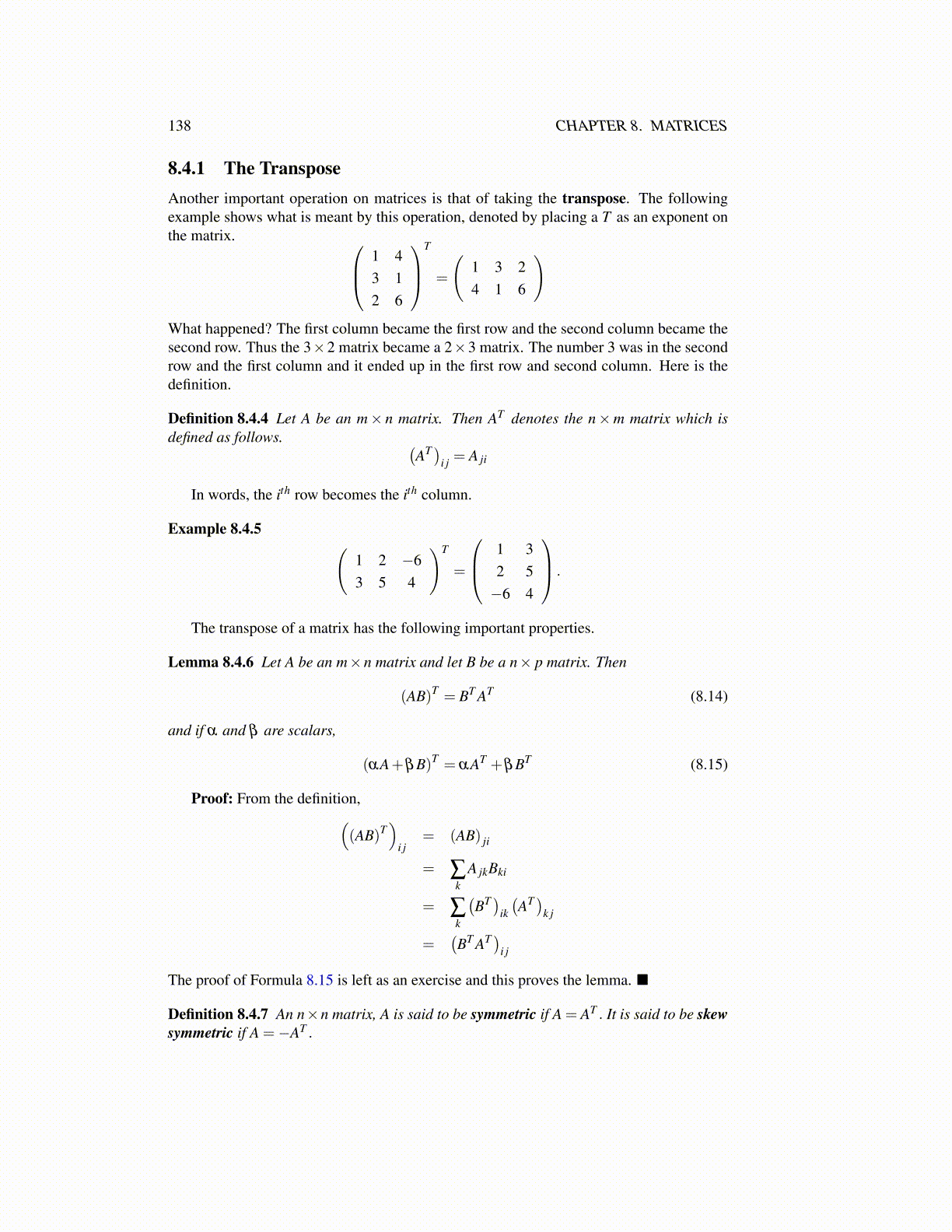
138 CHAPTER 8. MATRICES
8.4.1 The TransposeAnother important operation on matrices is that of taking the transpose. The followingexample shows what is meant by this operation, denoted by placing a T as an exponent onthe matrix. 1 4
3 12 6
T
=
(1 3 24 1 6
)
What happened? The first column became the first row and the second column became thesecond row. Thus the 3×2 matrix became a 2×3 matrix. The number 3 was in the secondrow and the first column and it ended up in the first row and second column. Here is thedefinition.
Definition 8.4.4 Let A be an m× n matrix. Then AT denotes the n×m matrix which isdefined as follows. (
AT )i j = A ji
In words, the ith row becomes the ith column.
Example 8.4.5 (1 2 −63 5 4
)T
=
1 32 5−6 4
.
The transpose of a matrix has the following important properties.
Lemma 8.4.6 Let A be an m×n matrix and let B be a n× p matrix. Then
(AB)T = BT AT (8.14)
and if α and β are scalars,
(αA+βB)T = αAT +βBT (8.15)
Proof: From the definition,((AB)T
)i j
= (AB) ji
= ∑k
A jkBki
= ∑k
(BT )
ik
(AT )
k j
=(BT AT )
i j
The proof of Formula 8.15 is left as an exercise and this proves the lemma. ■
Definition 8.4.7 An n×n matrix, A is said to be symmetric if A = AT . It is said to be skewsymmetric if A =−AT .